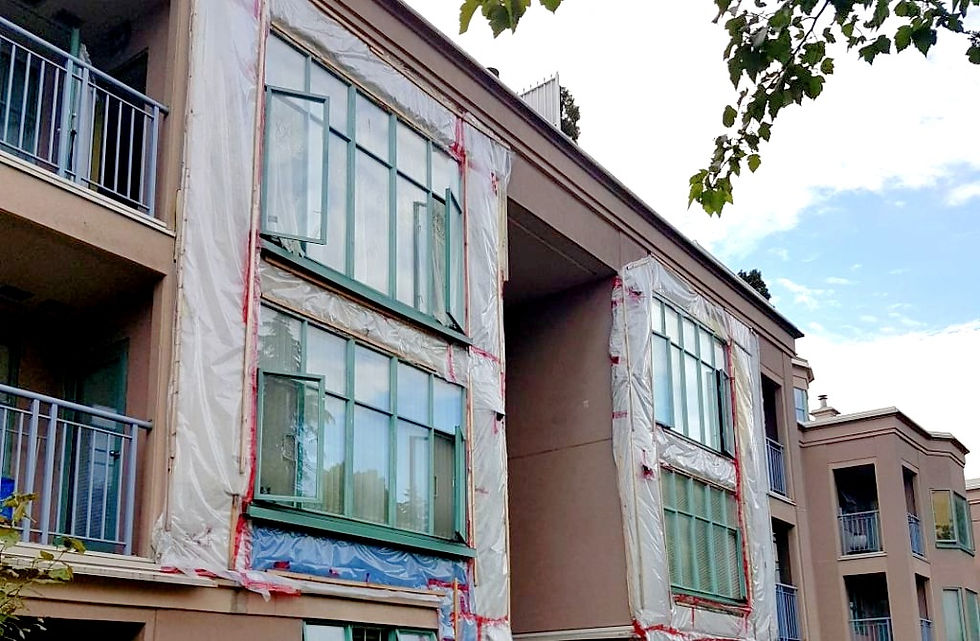What Is Vancouver's Leaky Condo Crisis?
Leaky Condo Crisis Overview
If you know someone who has lived in a Vancouver condo, chances are they were affected by the Leaky Condo Crisis. Beginning in the 1980s, Vancouver’s Leaky Condo Crisis caused damage to apartment buildings over 3 decades, with many still in need of repair today.

At the height of these repairs in 2008, it was estimated that there were a total of 72,193 leaky strata units - accounting for nearly 50% of all the condominiums built in BC since 1985. The accumulated cost of all these repairs amounted to over 1 billion dollars, and the crisis overall cost the provincial economy an estimated 5 billion dollars. However, the irresponsibility which caused this crisis, and its avoidability, may be even more shocking than the billions of dollars it cost to fix.
How did this happen?
The buildings affected during this crisis were typically 3-4 storey wood framed strata units clad with acrylic stucco (a dense construction material used to coat walls). The cause of this crisis can be attributed to the poor design, installation, and subsequent failure of the building envelope during the 30 year period of rapid construction in Vancouver. The influx of low-skilled labourers during this period resulted in many mistakes in the construction of condo complexes. Specifically, unsealed joints or small holes in the building’s waterproof membrane allowed for the effects of weather to penetrate the insides of buildings.

The lack of any drainage system in the building envelope, combined with the unbreathable nature of stucco, trapped moisture in the walls and roofs of Vancouver condos, invisible to occupants and passers-by until it was too late. Over time, the unbalanced build-up of water and moisture within the condo's envelopes began to rot the sheathing and structure, causing permanent damage.
What Was Wrong With the Design?
Another contributing factor to this crisis was the combination of the disconnect between the architectural design and construction of these condos, and their appropriateness for the Vancouver climate. Inspired by condo design that was popular in Los Angeles California (where rain and moisture build-up was not a problem), architects applied similar designs to the Vancouver market. These L.A. condos had no rain screen, and little to no overhang to protect the building exterior from moisture, thankfully any moisture build-up would dry out rapidly because of the very warm climate. However, this was not the case in British Columbia’s rainy oceanic climate where once moisture got past the waterproof membrane in condo units, it never left. Balancing construction schedules, materials, and applying the available knowledge of time are all constant considerations in building design - and the architects of Vancouver’s Leaky Condo Crisis certainly didn’t set out to design inappropriate building envelopes however, their short-sightedness led to some very expensive lessons learned.
Aftermath
The effects of Vancouver’s Leaky Condo Endemic stretched far beyond the unsightly waterproof tarps that draped leaking buildings. Some extreme cases of leaking damaged condominiums so badly that the structural integrity of the entire complex was compromised. Also, as a result of mold growth in building envelopes, many units became uninhabitable as they posed a health risk. In the years following the discoveries of these leaky condominiums, hundreds of lawsuits were filed against developers, architects, and contractors who were responsible for the flaws in the design and construction of these buildings.
Official investigations were also launched by the Canadian Mortgage and Housing Corporation and former Premier Dave Barrett to find the root cause of the crisis and enact future preventative legislation. These inquiries led to higher construction, material, inspection, and design standards along with improvements to the province's building code which still exist today.
Overall, the effects of Vancouver’s Leaky Condo Crisis still exist today with an estimated 200 buildings that may need further repairs despite the thousands of previous repairs over the last 2 decades. The quality of construction in many of these buildings was so flawed that they may never be able to fully recover from the years of moisture damage. Vancouver architects and engineers have certainly learned their lesson and adapted the design of condominiums to be better suited towards the rainy British Columbia climate. However, this does not mean that moisture intrusion in building envelopes is gone forever, especially in the wet climate of Vancouver BC.
Moving Forward
Like the mythical Phoenix which after a fire re-emerges stronger than ever, Vancouver’s housing industry has been born again. After the Leaky Condo Crisis, attention from the government, developers, and contractors has led to one of the most robust building enclosure communities in North America. This has paved the way for the adoption of net-zero emissions, passive house standards, and ultimately BC’s Energy Step Code. It has also propelled Green Buildings and Construction to become the #1 employer in Vancouver’s Green Economy. There is a community of building enclosure professionals that are already educated, field-tested, and have completed research projects on how to meet our next challenge of low carbon, energy-efficient, and non-leaky building enclosures. It is quite noticeable that many organizations engaged in the local Vancouver construction industry do not want to discuss the Leaky Condo Crisis. However, we feel that one must understand the history to be able to move forward with innovative solutions that will be needed for the challenges ahead.
.png)












Comments